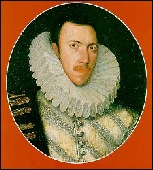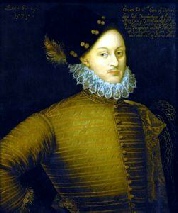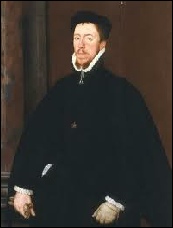
 Local Business, Food, Accommodation
History Group
Local Events
Local Business, Food, Accommodation
History Group
Local Events




 Summary of Castle Rising
Summary of Castle Rising
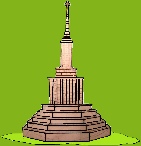










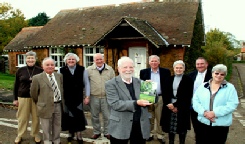




LORDS OF THE MANOR 1572 – 1614
The Elizabethan era was a period of English history when the Court of the Queen played a large part in determining the events in the country. It was a period when religious difference between Protestants and Catholics was a major division within the country and pressures from two continental powers, France and Spain required considerable diplomacy. There was unrest in Scotland and the wider world was being discovered through the voyages of Frobisher, Raleigh and Drake. It was the period of Shakespeare, Spenser and Marlow. Major political figures during her reign were Thomas Howard, the 4th Duke of Norfolk, William Cecil and Robert Dudley. The owners of Rising, particularly Thomas Howard, were heavily involved in the Court of the Queen and some paid the ultimate price for that involvement. As a consequence it seems unlikely that they paid much attention to the Manor or Chase.
It was also a period of change for the Manor of Castle Rising. The chase may have still served as an exclusive area for hunting game, but the castle and village were probably neglected. Thomas Howard, the 4th Duke of Norfolk (Appendix 1) had been attainted [loss of rights through conviction] by Queen Elizabeth for his involvement with Mary, Queen of Scots and he was executed for treason in 1572. The Manor and Chase of Castle Rising was one of his many properties and it remained in Royal ownership until 1578, when it was transferred into the ownership of Edward de Vere, 17th Earl of Oxford.
“Grant for Edward, Earl of Oxford, himself & heirs The Queen to all to whom etc., greeting. Know that we, as well in consideration of the good, true & faithful service to us by our dearly beloved cousin Edward, Earl of Oxenford, Great Chamberlain of England, before this time done & given as for divers other causes & considerations us specially moving, of our special grace and of our certain knowledge & mere motion have given & granted and by these presents for us, our heirs& successors, do give & grant to the forenamed Edward, Earl of Oxenford, all that our lordship or manor of Rising at the Castle with its entire rights, members, liberties &appurtenances in our county of Norfolk late being parcel of the lands & possessions of Thomas, late Duke of Norfolk, of high treason attainted & convicted; And all that our castle of Rising otherwise called Rising Castle with the appurtenances in Rising aforesaid, and all that our site of our castle of Rising with the appurtenances, and all the houses, edifices & buildings within the foresaid site of our foresaid castle or to the said castle & site or either of them belonging or appertaining, and all that our close of land called Braty Close with the appurtenances in Rising aforesaid in our said county of Norfolk and lately being parcel of the lands & possessions of the said Thomas, late Duke of Norfolk; And all those our lands, tenements [+&] mills whatsoever, fold-
Edward de Vere (see Appendix 2) was an interesting member of the Court of Queen Elizabeth. His chief claim to fame now (apart from his reported flatulence) is as a possible candidate for the authorship of the works attributed to William Shakespeare. Although he was related to the Howards by marriage (his aunt Frances was the wife of Henry Howard, a poet, son of the 3rd Duke and their son was the 4th Duke, mentioned above), rights of succession should not have resulted in him becoming Lord of the Manor of the Parish. Nina Green (pers. comm.) speculates that the reason Queen Elizabeth sold it to Edward de Vere, a frequent attendant at her Court, was that she had been persuaded that the property should eventually be returned to the successors of the 4th Duke and this was a roundabout way of doing it.
The next evidence of transfer of ownership of the Manor occurs in 1584 when the property was transferred to two gentlemen – Roger Townsend and Robert Buxton.
“Conveyance by Edward de Vere, Earl of Oxford, to Roger Townshend, Esq., and Robert Buxton, gent., of the manor and castle of Rising, Brakeye Close in Rising, Rising Chase with wild beasts, advowsons of Rising and Roydon, and waste ground called Riffeleye, excepting Ryffelye Close and common rights of the inhabitants of Gaywood” .
Roger Townsend and Robert Buxton were both in the service of Phillip Howard (Appendix 3), son of the 4th Duke, so presumably this sale was indirectly to Phillip. However direct evidence of the transfer from these two to the “feoffes of Philip, Earl of Arundel” occurs in another document in the Norfolk Record Office dated 1588.
“Conveyance by Townshend and Buxton to feoffes of Phillip, Earl of Arundel, of property as in last”.
The famous Map of the Chase of 1588 was commissioned and produced on this date also, but the circumstances of its production are not clear. Perhaps Elizabeth already knew that the property would come into her hands again since Phillip was soon to be attainted.
Phillip was a Catholic in England when it could be dangerous to be so. He was eventually committed to the Tower of London on charges of high treason and although never convicted, he was attainted in 1589 and died from dysentery after ten years of imprisonment there. He was immediately declared a martyr by the then pope and was much later canonised by Pope Paul VI in 1970, the only Lord of the Manor of Rising who achieved Sainthood!
PUBLIC RECORD OFFICE C 66/1165, mbs. 34-
Wikipedia Henry Howard, Earl of Surrey (1517-
“One thus can't help but wonder whether the grant to Oxford, who quickly sold the property to Philip Howard's servant, Roger Townshend, was a roundabout way of getting the property back into Philip Howard's hands”. Email from Nina Green Oct 2009,
NRO. How 145 342 x 6
The National Archives sp 12/154/13 ff 23-
NRO How 146 342 x 6
After his attainder in 1589, the Manor reverted again to the Crown and remained so for the rest of Elizabeth’s reign. After the accession of James I however it was then transferred to Henry Howard (1540-
Conveyance to trustees by Phillip, Earl of Arundel, in completion of (?) marriage settlement of Robert Sackvile and Lady Margaret, Arundel's sister, of property as in last
The second, in 1607, transfers the ownership to Henry Howard.
Assignment of lease for lives by Sir John Peyton knight and Sir John his son to Henry, Earl of Northampton, of Lords Close, the Castle Garden, toll of boats and carts with fish from the sea to Stourbridge Fair passing by the liberty of Rising Chase, 10a. in Babingley and Newton near Broade Water, land in Hillington Common, land called the Paile or Constabulary, underwood of Alderacres, land near Rising Mill supposed to be a decayed fishpond called the Castle Ponde, all in Castle Rising, Newton, Babingley, and Hillington, leased to the Peytons by letters Patent in 1595 following the attainder of the Earl of Arundel.
Henry was the younger brother (Henry, Earl of Surrey) of Thomas Howard, the 4th Duke of Norfolk who had been attainted and executed in 1572 (see above). He was also the son of Frances de Vere (mentioned above) who was the aunt of Edward de Vere.
Henry Howard is associated with the village of Castle Rising as the person who had the Trinity Hospital built. Henry Howard has been described as one of the most unscrupulous and treacherous characters of the age, an age where many were treacherous and unscrupulous. He was never able to endear himself to Queen Elizabeth, but aligned himself to her successor, King James I. This presumably is the reason why he became Lord of the Manor only after the death of Elizabeth. He presided over the trials of both Walter Raleigh and Guy Fawkes and died in 1614.
In Bradfer-
Wikipedia Phillip 20th Earl of Arundel.
Evidence for this comes from How 147 342x6 in which it is stated referring to the Castle Rising Chase that “ possession which then lately came to the hands of our late Sovereign by reasons of the attainder of Phillip, late Earl of Arundel.”
NRO How 147 342 x 6
Clearly the deer park was still in existence at this time.
NRO How 147 342 x 6
Bradfer-
Under these dates Bradfer-
1572 Queen Elizabeth.
1573 Edward de Vere, 17th Earl of Oxford.
No date Philip Howard, 18th (sic) Earl of Arundel.
No date Henry Howard, Earl of Northampton.
1614 Thomas Howard, Earl of Arundel.
From the above analysis, I think the correct names and times should be:-
1572 Queen Elizabeth.
1578 Edward de Vere, 17th Earl of Oxford.
1584 Saint Philip Howard, 20th Earl of Arundel.
1589 Queen Elizabeth and after her death James I.
1607 Henry Howard, 1st Earl of Northampton.
1614 Thomas Howard, Earl of Arundel.
Below is a family tree which shows the relationship between the various Lords of the Manor of this period. Whereas the lineage of the various Howards is clear, it is also obvious that Edward de Vere is not part of the natural succession. The Lords of the Manor of Castle Rising are indicated in Blue.
Thomas Howard Norfolk, 4th Duke of 1536-
English nobleman, son of Henry Howard, earl of Surrey. He succeeded his grandfather, the 3rd Duke, in 1554 and became Lord of the Manor of Castle Rising at that time. He was favoured by Queen Elizabeth I, although he was jealous of the larger measure of confidence she placed in Robert Dudley, earl of Leicester. Norfolk commanded the English forces that intervened in Scotland in 1559-
Edward de Vere, 17th Earl of Oxford.
Lord of Manor, Castle Rising 1578 -
One of the more interesting Lords of the Manor of Castle Rising was Edward de Vere, 17th Earl of Oxford. The Earls of Oxford were among the most important members of the English nobility, dating from the 11th century until 1702. Their family seat was at Castle Hedingham in Essex. The 11th Earl was in command at Agincourt in 1415 and John, the 13th Earl was a leading Lancastrian during the Wars of the Roses. He was in command at the Battle of Bosworth, alongside Henry Tudor (later Henry VII) in 1485, where he defeated the then Duke of Norfolk, a leading Yorkist.
Probably as a result of this battle, John was honoured by Henry VII by being made constable of Castle Rising in 1486. According to Bloomfield (1808) “Persons famous for their gallantry in military affairs and actions appear to have been honoured with the constableship and government of it [the castle]”. Also according to Bloomfield “In the 1st of Henry VII [1484] John de Vere, [13th]Earl of Oxford was made constable of the castle, steward of the Honour of Rising and ranger of the Chase for life, who commanded the vanguard in the battle of Bosworth where King Richard III was slain.”
The next Earl of Oxford to be associated with Castle Rising was Edward de Vere, the 17th Earl (1550-
He is perhaps most renowned at the present day as being one of the proposed authors of the works of William Shakespeare. His classical education, his knowledge of the Court of Queen Elizabeth and his family connection with Elsinore in Denmark (home of Hamlet) are presented as evidence in favour, but the date of his death and linguistic analyses of the style of the two writers make his claim unconvincing. Shakespeare’s “Tempest” requires information which would only be available in 1610, 15 years after the death of de Vere. He was nevertheless a poet of some talent.
He went to Queen’s College, Cambridge and entered the Royal Court in the late 1560s having been made a royal ward and raised in the household of Sir William Cecil early in his life upon the death of his father. At the age of 17, he killed a servant while practicing fencing, but was not convicted as it was claimed that the unfortunate man had committed suicide by running into the sword!
He married Sir William’s daughter Ann Cecil when she was only 15 but it seems to have been a tempestuous marriage at least at first. In 1575, at the age of 25 he spent several months in Germany, France and Italy and there are several stories associated with these travels. It is said that he embarked on the journey because of an embarrassing incident at the Court of Queen Elizabeth. According to John Aubrey the 17th Century author of “Brief Lives” while Edward to Vere was bowing before the Queen:-
"The Earl of Oxford, making of his low obeisance to Queen Elizabeth happened to let a Fart, at which he was so abashed and ashamed that he went to travel, seven years. On his return the Queen welcomed him home and said, 'My Lord, I had forgot the Fart’”.
Clearly John Aubrey was inaccurate about the length of the overseas visit by Edward de Vere so there may be some doubt about the veracity of the story itself, but it does somehow bring him to life! The period of his travels appears to have been a wild period of his life as he was known to have consorted with a prostitute called Virginia Padoana in Venice and with a 16 year old Venetian choirboy named Orazio Cogno whom he brought back to London with him. Apparently on his return his ship was attacked by pirates and he was stripped naked, only being allowed to escape when the pirates realized his noble status. On his return he became estranged from his wife for some time and refused to accept the fatherhood of the child born during his absence.
He fathered an illegitimate child by Ann Vavasour, niece of Sir Thomas Knyvett, which led to a prolonged feud. He was briefly imprisoned in the Tower of London. He later became reconciled with Ann Cecil and they had 4children. Ann died in 1588 and he then married Elizabeth Trentham, a union which resulted in the 18th Earl of Oxford.
In later life he seemed to settle down and commanded one of the English warships which fought against the Spanish Armada. It appears that his ability to manage his finances was sadly inadequate and in 1586 he was granted an annual pension of £1000. His later life seems to have been dominated by his writing. He outlasted Queen Elizabeth by just one year, dying in the first year of King James I in 1604.
Wikipedia and http://www.deveresociety.co.uk/
Saint Phillip Howard, 20th Earl of Arundel.
Born in Strand, London
The Strand is a street in the City of Westminster, London, England. It currently starts at Trafalgar Square and runs east to join Fleet Street at Temple Bar London, which marks the boundary of the City of London at this point, though its #History has been longer than this....
, he was the eldest son of Thomas Howard, 4th Duke of Norfolk
and Lady Mary FitzAlan, daughter of Henry FitzAlan, 19th Earl of Arundel
.
Henry FitzAlan, 19th Earl of Arundel was an English nobleman, who over his long life assumed a prominent place at the court of all the later Tudor sovereigns, probably the only person to do so....
He was baptized
In Christianity, baptism is the ritual act, with the use of water, by which one is admitted as a full member of the Christian Church and, in the view of some, as a member of the particular Church in which the baptism is administered....
at Whitehall Palace with the Royal Family in attendance. and was named after his godfather, King Philip of Spain.
Philip II was King of Spain from 1556 until 1598, List of monarchs of Naples from 1554 until 1598, king consort of England, as husband of Mary I of England, from 1554 to 1558, lord of the Seventeen Provinces from 1556 until 1581, holding various titles for the individual territories, such as Duke or Count; and King of Portugal as Philip I...
At the age of fourteen, he was married to his foster sister, Anne Dacre
Anne Howard, n?e Baron Dacre, was the Earl of Arundel. She lived from 1557 to 1630 and was a Catholic Conspiracy . Her husband was imprisoned and became a Saint#Roman Catholicism....
. After years of estrangement, they were reunited and built a very strong marriage. His father was attainted
A bill of attainder is an act of legislature declaring a person or group of persons guilty of some crime and punishing them without benefit of a trial....
and executed in 1572, but Philip Howard succeeded to his mother's heritage upon the death of his grandfather, becoming Earl of Arundel
Arundel is a market town and civil parish in the South Downs of West Sussex in the south of England. It lies south southwest of London, west of Brighton, and east of the county town of Chichester....
in 1580.
Howard, and much of his family, remained Catholics during the reign of Queen Elizabeth,
Elizabeth I was List of English monarchs and Queen of Ireland from 17 November 1558 until her death. Sometimes called The Virgin Queen, Gloriana, or Good Queen Bess, Elizabeth was the fifth and last monarch of the House of Tudor....
when it was very dangerous to do so. They also attempted to leave England without permission. While some might have been able to do this quietly, Howard was second cousin of the Queen. He was committed to the Tower of London
Her Majesty's Royal Palace and Fortress, more commonly known as the Tower of London , is a historic monument in central London, England, on the north bank of the River Thames....
on 25 April 1585. While charges of high treason
High treason is criminal disloyalty to one's country. Participating in a war against one's country, attempting to overthrow its government, spying on its military, its diplomats, or its secret services for a hostile and foreign power, or attempting to kill its head of state are perhaps the best-
were never proved, he was to spend ten years in the Tower, until his death of dysentery
Dysentery is a disorder of the digestive system that results in severe diarrhea containing mucus and/or blood in the feces. If untreated, Dysentery can be fatal....
. He had petitioned the Queen as he lay dying to allow him to see his beloved wife and his son, who had been born after his imprisonment. The Queen responded that if he would return to Protestantism.
Protestantism is a movement within Christianity that originated in the sixteenth-
His request would be granted. He refused and died alone in the Tower. He was immediately acclaimed as a Catholic Martyr
Catholic is an adjective derived from the Greek language adjective , meaning "whole" or "complete". In the context of Christianity ecclesiology, it has a rich history and several usages....
The term martyr is most commonly used today to describe an individual who sacrifices his or her life in order to further a cause or belief for many....
.
He was buried without ceremony beneath the floor of the church of St Peter ad Vincula, inside the walls of the Tower. Twenty nine years later, his widow and son obtained permission from King James I of England
James VI and I was List of monarchs of Scotland as James VI, and List of English monarchs and King of Ireland as James I. He ruled in Kingdom of Scotland as James VI from 24 July 1567, when he was only one year old, succeeding his mother Mary I of Scotland....
to move the body to the FitzAlan Chapel just below Arundel Castle
.
Arundel Castle in West Sussex, England is a restored medieval castle. The castle dates from the reign of Edward the Confessor and was completed by Roger de Montgomery, who became the first to hold the Earl of Arundel by the graces of William I of England....
His tomb was moved to the Catholic cathedral in Arundel in 1971 and remains a site of pilgrimage.
http://www.absoluteastronomy.com/topics/Philip_Howard,_20th_Earl_of_Arundel
